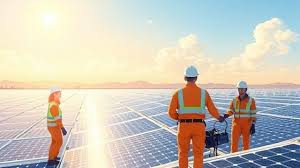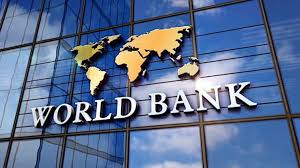Column
For An Igbo President

While accepting the surrender of Col. Emeka Odumegwu-Ojukwu’s collapsed Biafran Republic on January 15, 1970, the then military Head of State, General Yakubu Gowon, was said to have declared a ‘no victor, no vanquished’ end to the 30-month senseless hostilities. Surely, nothing could have served to better reassure a beleaguered Lt. Col. Phillip Effiong and the remainder of his rag-tag secessionist army.
Gowon’s post-war cabinet had comprised a number of Igbo personalities as did subsequent federal executive councils up till the military handover of power to an elected civilian government in 1979. Even when the lid was lifted on political activities, beginning with the experimental local council polls in 1976, there was no indication that Igbo people were deliberately hindered from contesting for the highest office in the land.
If my memory still serves me, the party presidential candidates at that time were Alhaji Shehu Shagari for the National Party of Nigeria (NPN); Chief Obafemi Awolowo for the Unity Party of Nigeria (UPN); Dr Nnamdi Azikiwe for the Nigeria Peoples Party (NPP); Mallam Aminu Kano for the Peoples Redemption Party (PRP); and Alhaji Waziri Ibrahim for the Great Nigeria Peoples Party (GNPP). I can also recall that Dr Alex Ekwueme, Dr K O Mbadiwe and Dr J O J Okezie slugged it out in the vice presidential primaries of the NPN; Awolowo literally hand-picked Chief Phillip Umeadi as his running mate; while GNPP’s Ibrahim shared his ticket with Dr B U Nzeribe – all from Igboland.
Shagari and Ekwueme did emerge victorious at the 1979 presidential poll and went ahead to rule the country for a little over four years before being ousted in a military coup. During their tenure, if any ugly fate had befallen Alhaji Shehu by way of resignation, impeachment, health incapacitation or even death, an Igbo man would have been constitutionally sworn in as Nigeria’s president as early as just a decade after the civil war. Or has this possibility not crossed the minds of those who claim that Igbo people are being denied the presidency?
Even though the clamour for a president of Igbo extraction had long been out there, I think it may have been shifted into the present overdrive after Dr Goodluck Jonathan from a minority tribe became president. I say so because generally, there seems to be this conception of a political pecking order where the three major ethnic groups in the country must first have their turns before any of the minority tribes is invited to the table.
But truth be told, the Nigerian nation has not been fair to the South East geo-political zone, particularly in terms of states creation. How can it be explained that of the six such zones in the country, only the South East has five states while the others have six each and the North West, seven? Here, the usual excuse of non-viability holds no water as only few states in the federation can be considered viable in the real sense of the word. The issue of population will not also suffice as the zone is already densely populated. Equally griping is the fact that late Dr Ekwueme, an Igbo, was among those who first nurtured the idea of splitting the country into such zones for equity sake and creation of better sense of belonging. Why then should his zone be the very one to be so short-changed?
Back to the jostling for who occupies the Aso Rock Villa, the Igbos certainly have a lot of work to do. This is regardless of the outcome of the 2023 polls. Like the Yorubas of Nigeria’s South West, they must learn to float and wholly support a big political party of their own rather than always dispatch some of their elites to hold nocturnal consultations with the Arewa leadership as to gauge the core north’s inclination during party formation seasons.
Aside the NCNC in the First Republic and perhaps the NPP which Dr Azikiwe was said to have hijacked from Alhaji Waziri in the Second Republic, the Igbos have not presented a formidable political party with which to run for elective offices in the country. Again, they hardly play the opposition when not successful at the polls. For instance, NPP’s accord with the NPN in 1979 fell apart even before the next general elections in 1983 with most of its ministers and advisers refusing to relinquish their positions in the Shagari cabinet – something that would be inconceivable in Awolowo’s UPN or any other serious Yoruba party for that matter!
Where they are unable to form their own strong party, Ndigbo can at least mold and roll themselves into any of the existing ones through a solid political association or movement while still retaining its structure for a possible future realignment. This is against the present scenario where they join parties individually. Not long ago, an ex-governor from the zone even crossed from a relatively small party to a major one without bothering to carry along the whole of his former party or any part thereof.
Even when forced into opposition in the present dispensation, the South East governors of PDP and APGA have not appeared as critical of the ruling APC as the late Imo State Governor, Chief Sam Mbakwe, was of the Shagari administration in the Second Republic. Frankly, if they have been raising their voices enough against Abuja, the secessionist IPOB leader, Nnamdi Kanu, may not have attracted the kind of cult followership he currently enjoys in the zone.
Thank God there is also this growing, if belated, realisation among the Igbo elite that rather than sit and wish for party presidential tickets to be ceded to their zone in 2023, they had better start working for it by building bridges across ethnic and political divides. Already, some prominent and outspoken politicians from the other zones are beginning to consider the idea. All the South East needs to do at this point is push harder and try to avoid any further vitriolic while seeking ways to douse the prevailing separatist agitation in the region.
Of course, Igbos are widely acknowledged as a very ingenious, enterprising and mostly successful people in their chosen endeavours; hence they are regarded as the Jews of Africa. With all this, who said the messianic president Nigeria desperately desires cannot hail from anywhere in a zone that also comprises Abia as God’s Own State? I rest my case.
By: Ibelema Jumbo
Column
Renewable Energy Faces Looming Workforce Crisis

Column
Why Oil Prices Could See Significant Upside Shift

Column
Nuclear Stocks Soar on Stargate AI Infrastructure Announcement
-

 Business3 days ago
Business3 days agoPETAN, Others Unveil ALCO, Get NCDMB’s Support … Mull Synergy With APPO, AU
-

 News3 days ago
News3 days agoNigeria’s Debt To W’Bank IDA Hits $19.2bn -Report
-

 Sports3 days ago
Sports3 days agoD’Tigers flawless finish against Lions in AfroBasket
-

 Sports3 days ago
Sports3 days agoNYG:154 Nasarawa Contingent Storms Kwara For Zonal Eliminations
-

 Sports3 days ago
Sports3 days agoNigeria delegation Visits London over 2030 Commonwealth bid
-

 Business3 days ago
Business3 days agoAON Lifts Ban On Freed Ibom Air Passenger
-

 Niger Delta3 days ago
Niger Delta3 days agoSSI Moves To Empower Residents Of N’Delta Communities
-

 News3 days ago
News3 days agoChurch Renders Free Medical Outreach, Others To Host Communities

